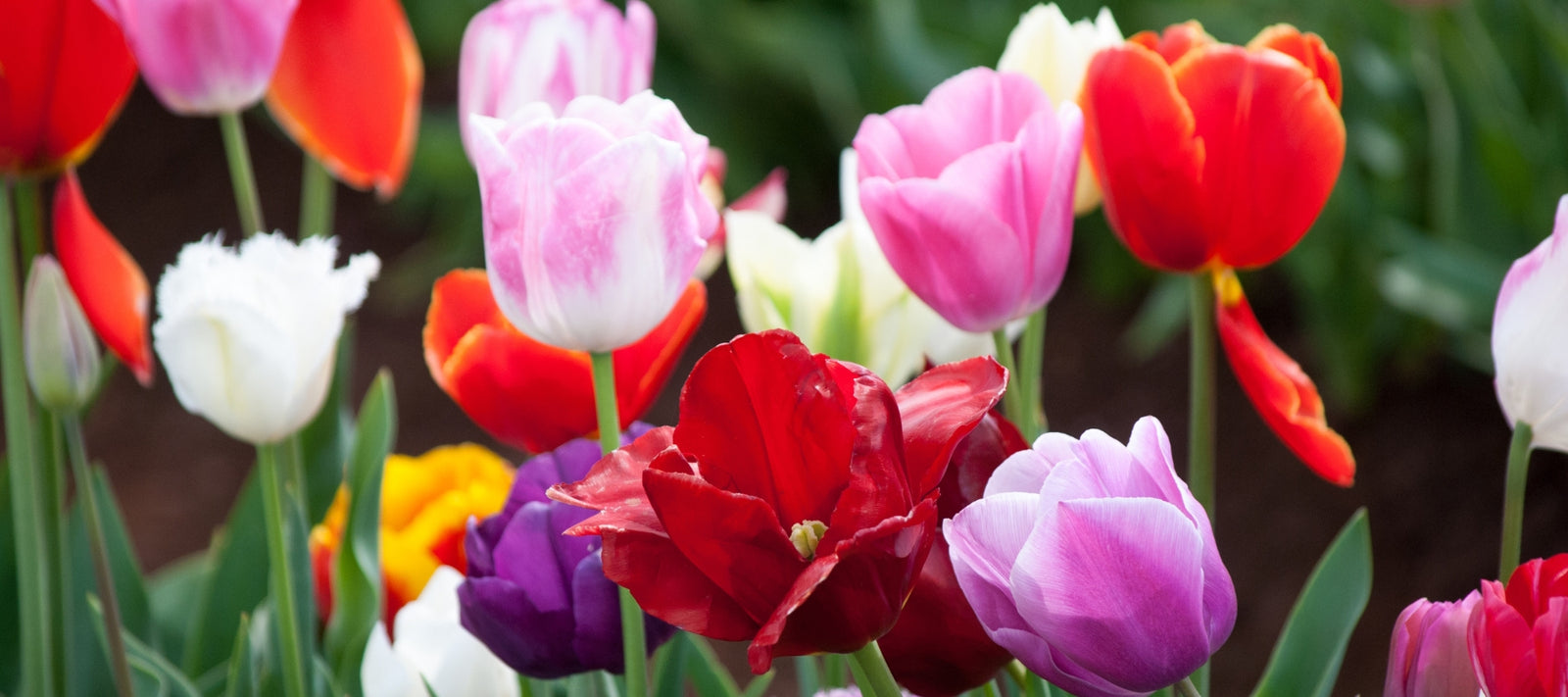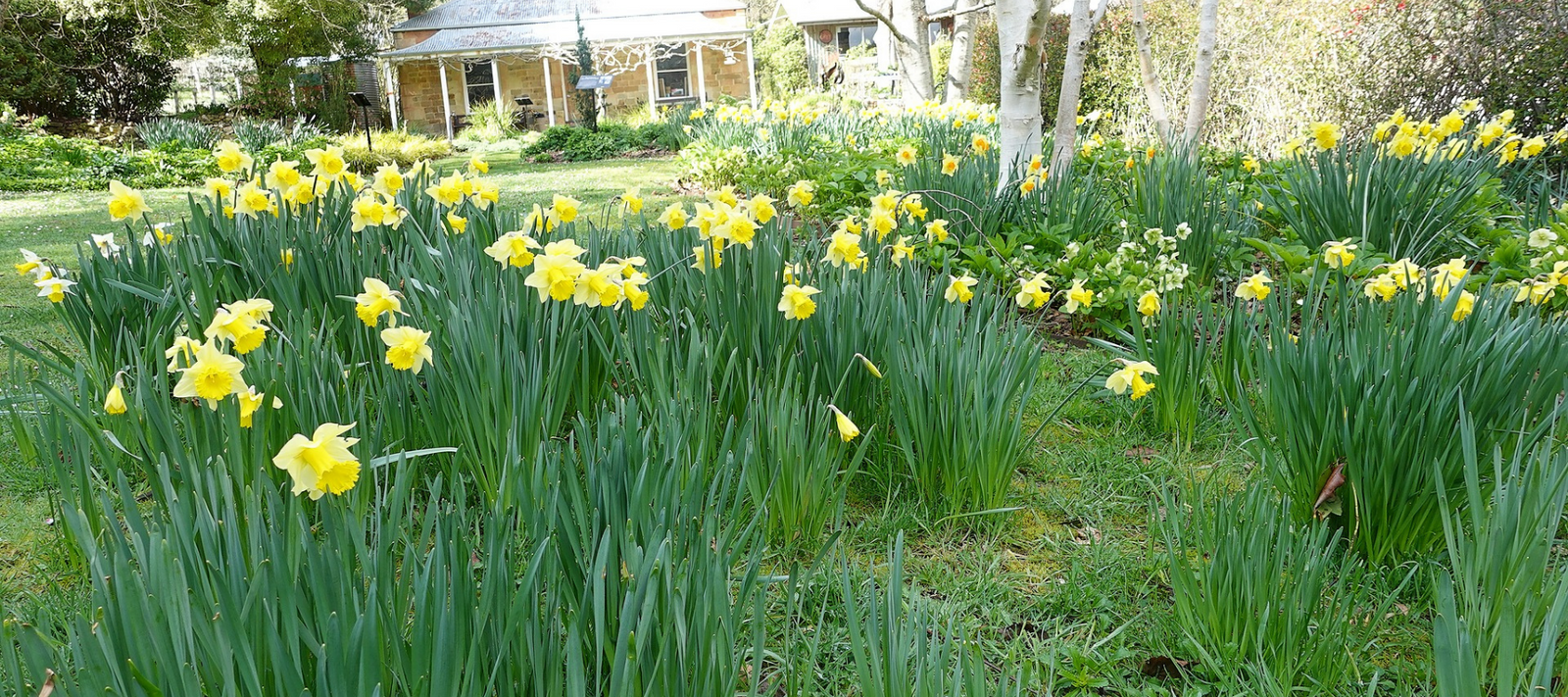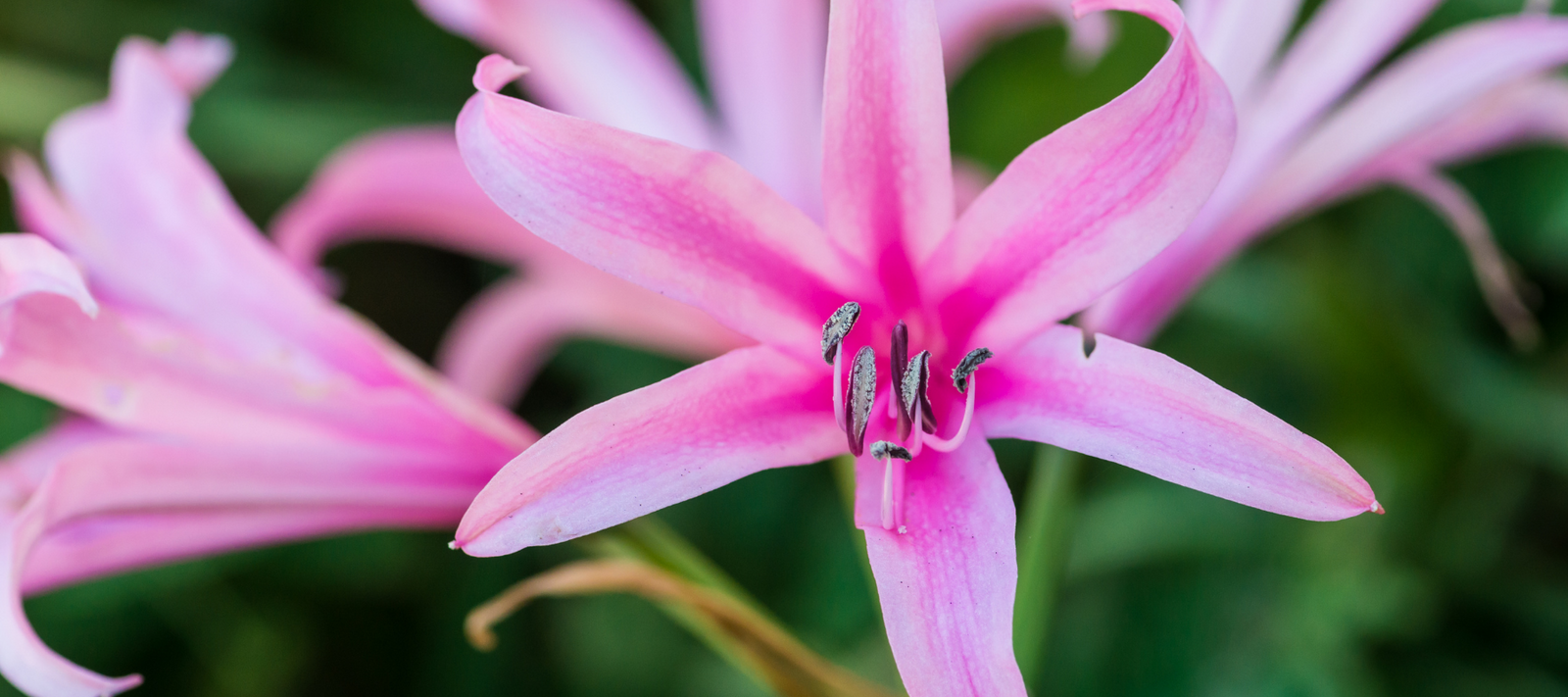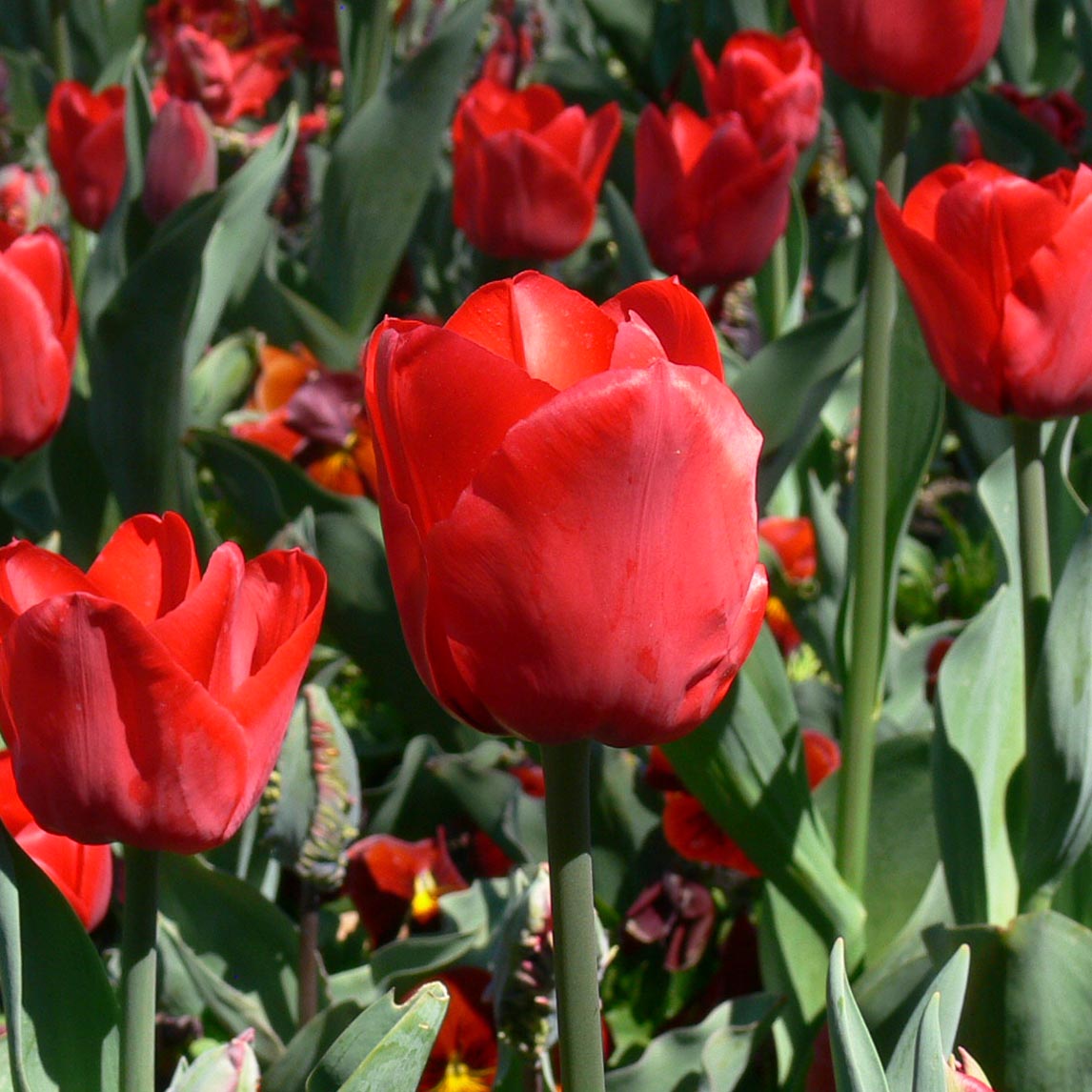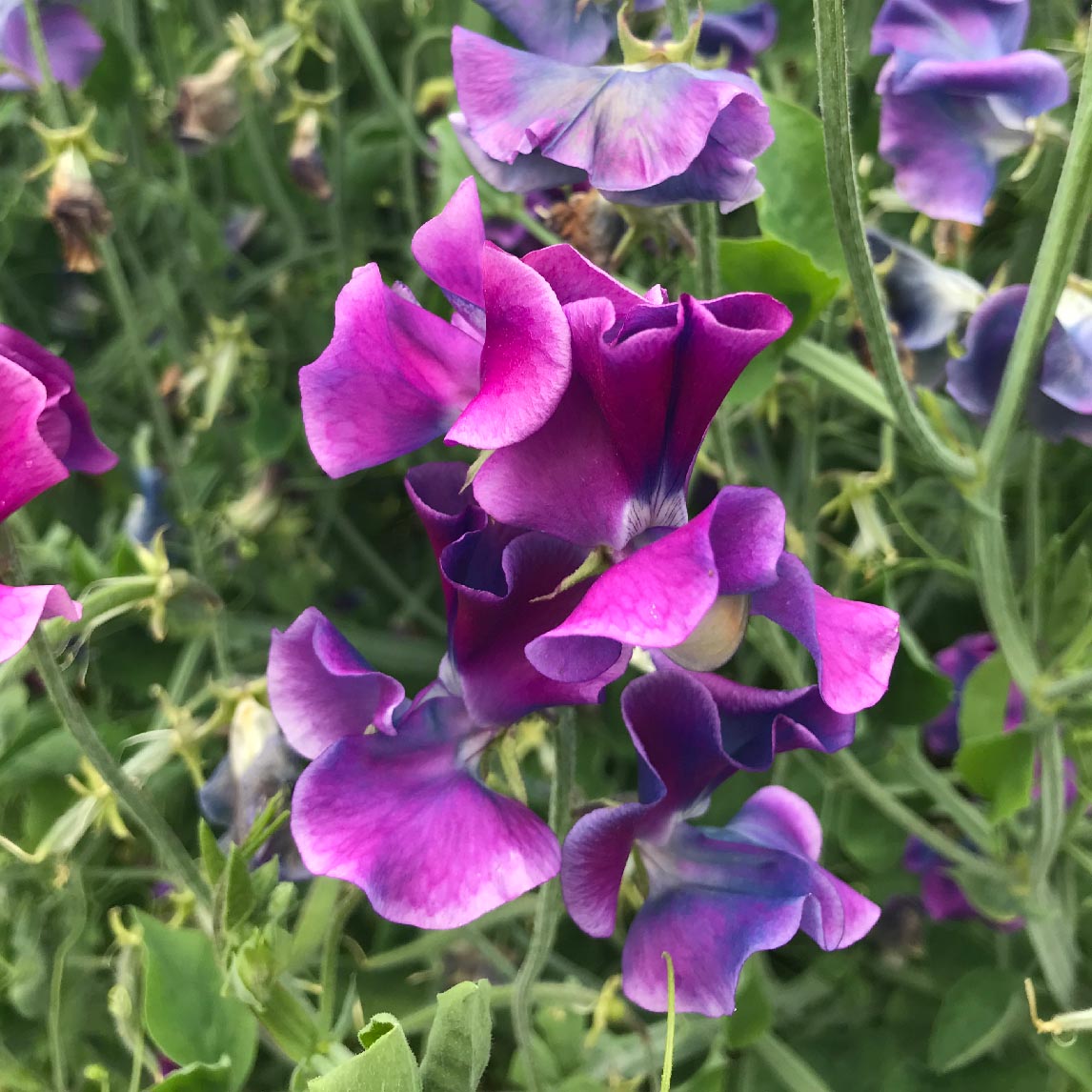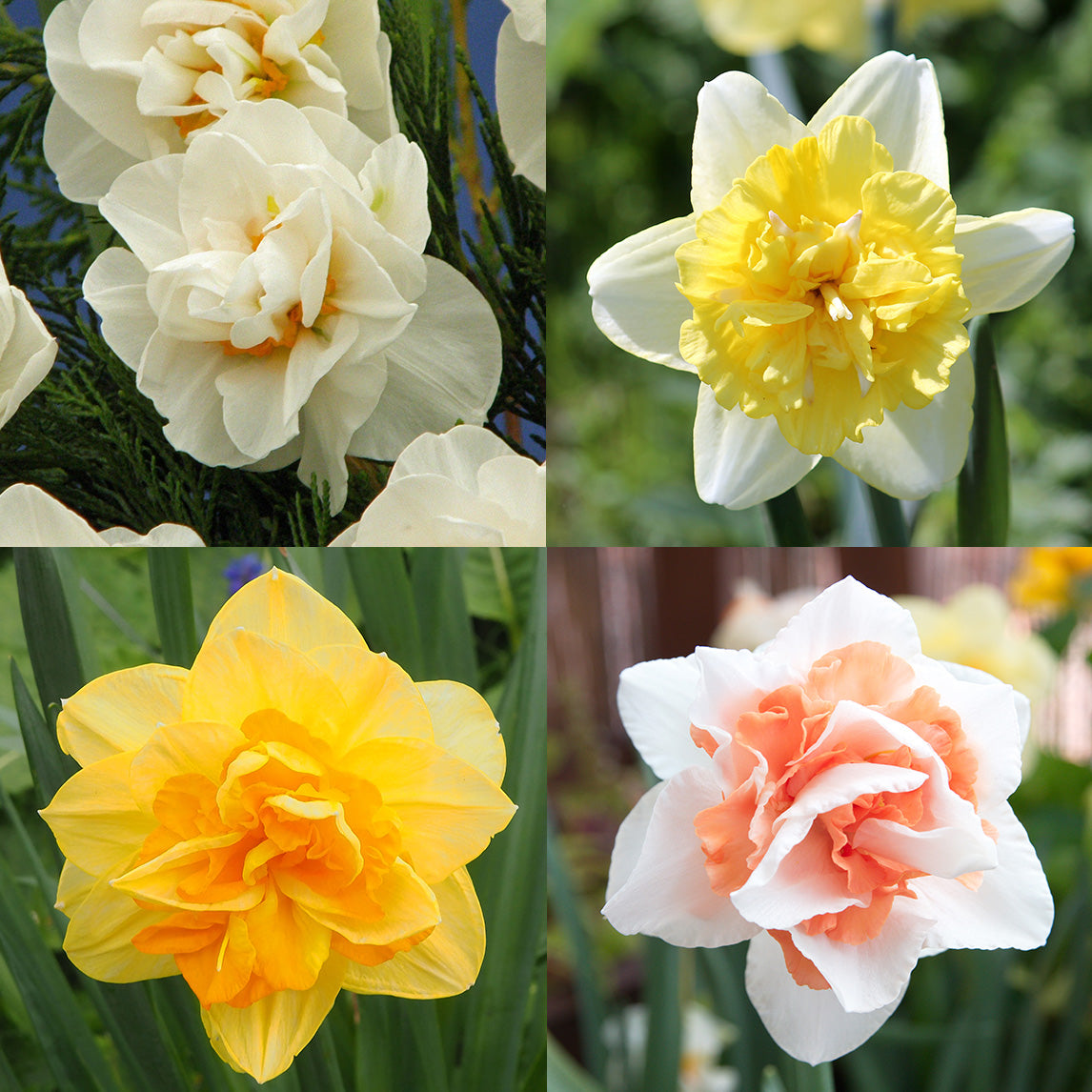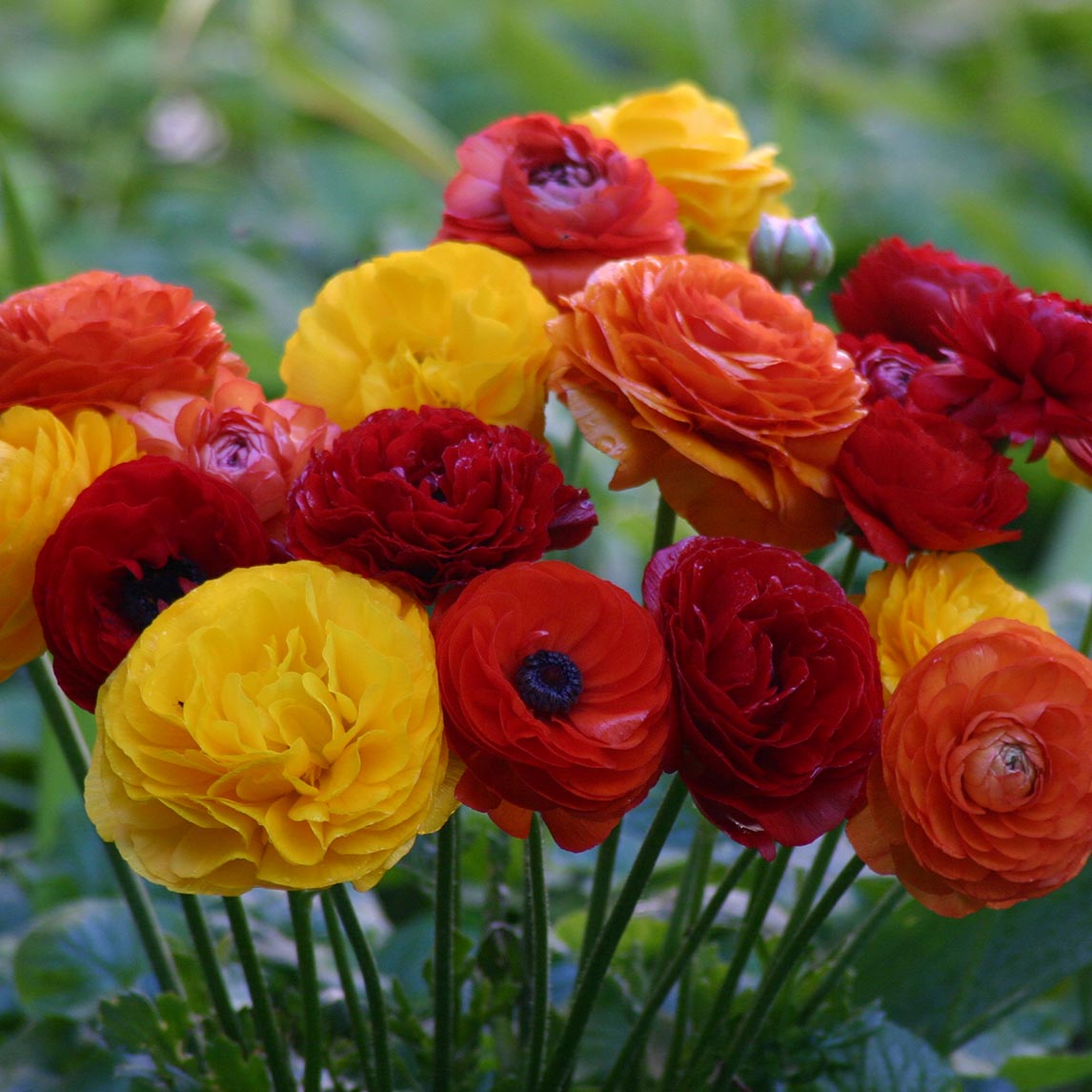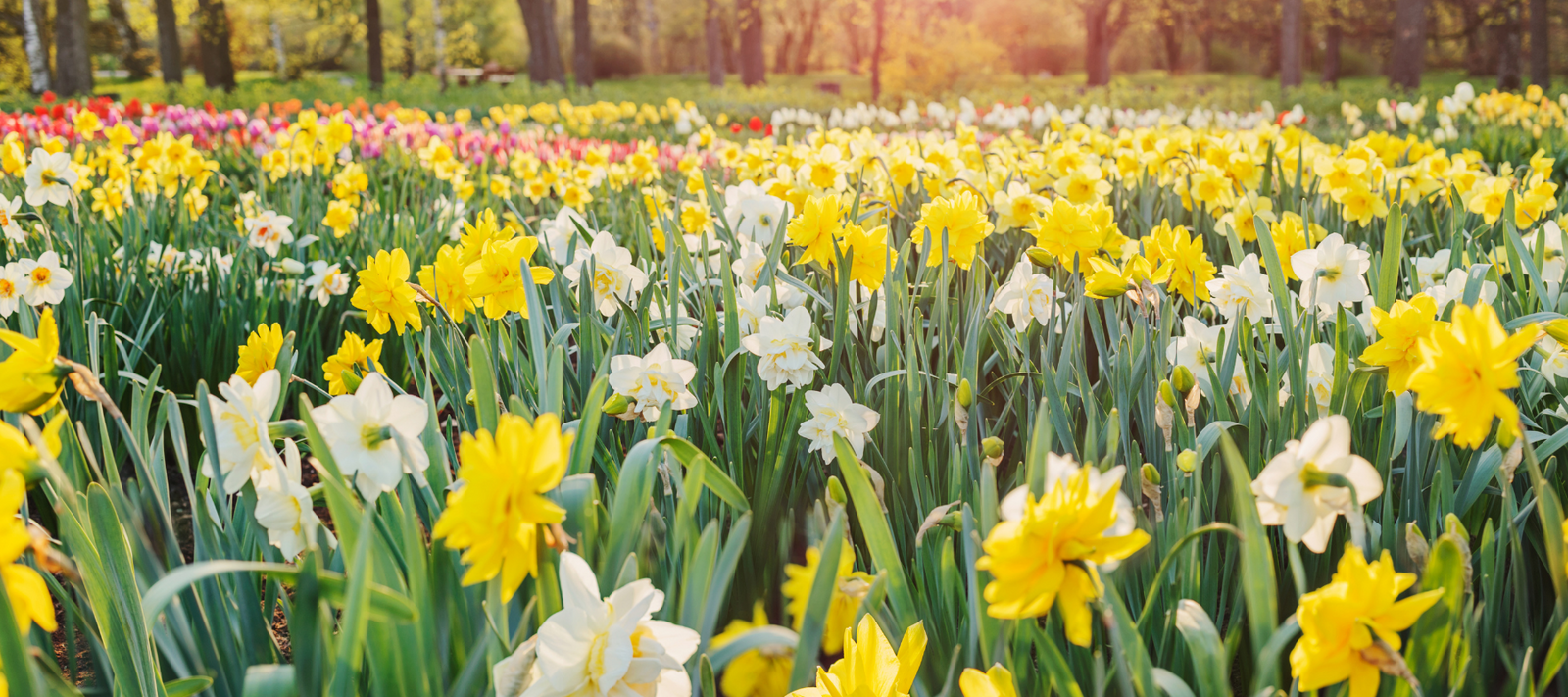
There is a stunning array of seasonal flowering bulbs to choose from in a kaleidoscope of colours, featuring magnificent forms and wonderful fragrances. Have fun when planting bulbs, more is more and there is no right and wrong in terms of combinations.
Preparation
Spring bulbs do best in well-drained soil in a sunny position with regular water and fertilising to maximise bloom quality.
Be sure to leave space for the bulbs to eventuality multiply and naturalise. They can also be lifted and divided every few years to increase spacing and flowering quality.
Planting
Planting depth can sometimes be a challenge, however this rule of thumb generally works well - measure the size of the bulb from root to tip and make sure the bulb is covered with this amount of soil. As with every rule, there are exceptions! Cyclamen grow near the surface in their native habitat, so will unfortunately fail if planted too deeply, while Eucomis like to be planted with their necks just above the soil and the lovely Nerines prefer to be planted just at soil level.
Plant spring flowering bulbs between March and May and Summer/Autumn.
Plant your bulbs with the pointy end up (Ranunculus are planted with the ‘claws’ facing down). If you're in doubt which way up to plant them, put them on their side and they'll find their own way.
Bulbs have evolved in the wild to thrive in harsh climates – the first Tulipsoriginally came from the Himalayas! The bulb itself is a nutrient vessel that holds the young embryonic plant in stasis until the perfect conditions arrive for it to emerge and flower. After the flowering stage, the foliage dies down and the nutrients are returned to the bulb for the following flowering season, which is why it’s important not to remove the foliage too soon.
Cool climate bulbs may be grown in warmer zones but they might need to be treated as annuals. Many bulbs require a chilling period over winter in order to re-emerge from their dormancy especially Tulips. These can be precooled, or stored in the crisper of your refrigerator for up to 8 weeks before the scheduled planting time. There are some bulbs, mainly from the Mediterranean and South Africa, which naturalise in warmer climates and do not need to be lifted or chilled. Jonquils, Ixias, Tritonias, Scilla and Veltheimia all grow in the warmer areas.
Bulbs for the cutting garden
What delights can be achieved by planning a flower picking garden!
It’s as easy as a little seasonal soil preparation in a garden bed or suitable container and planting the bulbs…perfect for beginners or avid gardeners alike!
Bulbs that are suitable as cut flowers include colourful Tulips, Freesia, stately Gladiolus, Dutch Iris, Nerines and Ranunculus. These can be mass planted along with hardy flowering annuals for a wondrous cutting garden to delight the senses with indulgent floral displays for all to enjoy.
Liliums will add a beautiful highlight to the mix adding height and glorious aromas.
These types of flowering bulbs can also add seasonal accent to a perennial flower garden, with the added bonus of the perennials hiding the diminishing foliage of the seasonal bulbs.
Bulbs for meadow (mass) plantings
Drifts of flowering bulbs through open spaces invoke a wonderful feeling of nature. Bluebells drifting in swathes amongst deciduous trees mimics the beauty of nature in the wild. Grape hyacinths or dainty Muscari adds an element of whimsy, whilst Lilly of the Valley planted in shady areas can be a wonderful addition to bring light and interest to a darker area of the garden. Colorful patches of Freesia can complement a planting scheme and add impact.
Plant the bulbs in groups or in long swathes at the recommended depths. You can also choose to combine flowers of similar heights to add colour and interest. Before planting, be sure to clear the area of weeds and improve the soil and drainage if necessary. Plant the bulbs and cover them back over with soil, then mulch the area to inhibit weed growth whilst the foliage is establishing. Water the bulbs in at the time of planting, but then hold off watering until the foliage appears and fertilise the plants periodically once flowering begins.
Bulbs for the dry garden
Magnificent results can be achieved from growing the right flowering bulbs even in a dry climate garden. Soil preparation becomes a little more important to ensure adequate moisture retention with perfect drainage. Simply add organic matter to build the soil structure before planting seasonal bulbs to the recommended depth.
There’s a stunning array of bulbs suitable for dry climates that include a wide variety of decorative Alliums, Cyclamen, Sparaxis or Ranunculi. The classic species of Tulip ‘Tinka’ are a long-lived variety suitable for naturalising in a dry garden and offer a bright burst of spring colour. ‘Blushing Bride’ Gladiolus offers a glorious show of arching heads of white flowers with a gorgeous pink blush.
These are best planted in groups or combined with other dry garden bed plants to enhance seasonal colour. The ever popular Hippeastrums can make a lovely addition, just right to accentuate a perennial border planting. Plan your flowering bulb selections by season to enjoy a long display.



